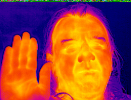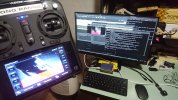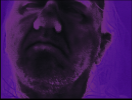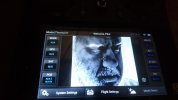Don't worry. The competitors are in the same situation.
 forum.dji.com
forum.dji.com
As I see, the microbolometer for this EXPENSIVE camera looks the same as in the high-end HTi cameras. Due to the nature of the VOx sensors, I'm not sure radiometric with constants is possible at all. Differential measurement will be done on the fly, but real data not. More than. there is confusion in the mean of "radiometric". FLIR uses a trick to say "Temperature Measurement can be defined as a collection of techniques designed to measure electromagnetic radiation, including the spectrum of visible light. The terms “thermography” and “Temperature Measurement” are sometimes used interchangeably, since radiometric measurements are essentially reading the intensity of thermal radiation."
from here: The Benefits and Challenges of Radiometric Thermal Technology
Further, in the same text, they say about the importance of all spectrum to see if you want to protect your wires. Good is Yuneec forget to plagiarise this too.
Good is Yuneec forget to plagiarise this too.
RADIOMETRIC JPEG M2EA
Good morning, This week we received our M2EA unit, which among its specifications highlights the possibility of obtaining r-jpeg (radiometric) images. This means being able to save thermal information in each pixel and this is indicated by the DJI producer specifications on their official...
As I see, the microbolometer for this EXPENSIVE camera looks the same as in the high-end HTi cameras. Due to the nature of the VOx sensors, I'm not sure radiometric with constants is possible at all. Differential measurement will be done on the fly, but real data not. More than. there is confusion in the mean of "radiometric". FLIR uses a trick to say "Temperature Measurement can be defined as a collection of techniques designed to measure electromagnetic radiation, including the spectrum of visible light. The terms “thermography” and “Temperature Measurement” are sometimes used interchangeably, since radiometric measurements are essentially reading the intensity of thermal radiation."
from here: The Benefits and Challenges of Radiometric Thermal Technology
Further, in the same text, they say about the importance of all spectrum to see if you want to protect your wires.






